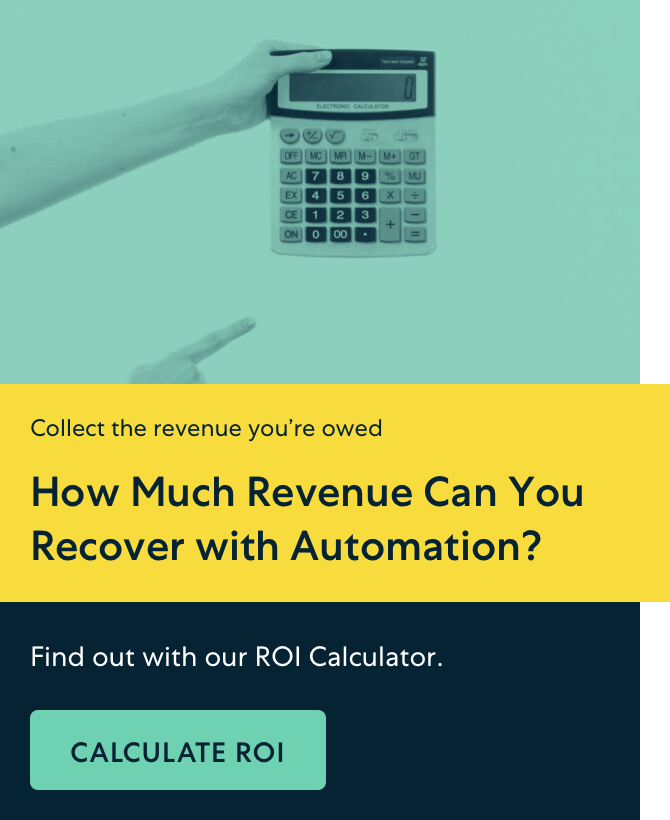Imagine if you could increase your monthly recurring revenue (MRR) without putting a single cent toward new customer acquisition. No ad spend to raise brand awareness. No financial or time investment in generating or warming up new leads. Oh, and your conversion rates will be higher. In this scenario, you’re up to 14X more likely to sell.
Yep, you guessed it!
Your current customer base is a gold mine of unrealized opportunity—the chance to provide more value and increase monthly recurring revenue, AKA. expansion MRR.
With many businesses’ budgets tightening this year, expansion MRR—rather than new MRR—is understandably sitting front and center. So, let’s explore the ways a SaaS business can add expansion MRR, and how its recurring billing software can build, facilitate, and advance both strategies.
Upsell vs cross-sell SaaS strategies
Upselling and cross-selling drive one of the most vital types of revenue: expansion MRR. Many SaaS businesses aim for a target rate of between 20 and 30%, with higher numbers being absolute rocket fuel for business growth.
Essentially, these strategies are suggesting relevant products at the right time to the right people, with a few key differences.
Similarities
Although they are different strategies, upselling and cross-selling have a lot of similarities which means the terms often get confused.
For example, both sales strategies:
- reduce customer acquisition costs by selling to your existing customer base,
- aim to provide added value (or a more comprehensive solution) to existing customers,
- are intended to increase LTV,
- may be initiated by the customer, sales team, or customer success team, and
- can occur on the pricing page, at renewal, or at any point in the customer journey—although that may have other implications (more on that in a minute).
Despite their vast similarities, a few key differences set the two activities apart.
Key differences
- Cross-selling refers to selling extra features or complementary products to the customer’s initial purchase, whereas
- an upsell is when a customer moves to an upgraded or enhanced version of your product.
Think of cross-selling as offering add-ons, and upselling as moving to a larger, higher-end, or premium subscription package (at a greater cost).
- Cross-selling is a product development exercise. You’ll need to constantly innovate and test additional features, functionality, and products to tempt customers, whereas
- upselling is more of a sales and marketing exercise, convincing your customers to spend more money with you as their own business grows.
A correlation between your own growth and your customers’ growth helps foster loyalty and increase expansion MRR.
Why is expansion MRR important?
Expansion MRR is important because of its positive links with these other vital growth-focused metrics:
- Customer acquisition cost (CAC)
- Customer lifetime value (LTV)
- Customer churn
It’s well-known that selling to your existing customers is not just easier and more profitable, it’s cheaper too. That’s because there is no CAC—you’ve already acquired the customer!
Expansion revenue growth from upselling and cross-selling means your customers are spending more money with you each month. Naturally, this should increase how much they spend over their lifetime with you (LTV) and improve your bottom line—provided they don’t churn.
The good news is that cross-selling and upselling actually limit churn. If customers are choosing to spend more money on premium products or additional features, you’re solving more of their problems. And in B2B SaaS, that means you’re most likely providing value across more areas of their business.
Aside from that, expansion MRR is an indicator of
- customer happiness and loyalty,
- revenue sustainability, and
- positive response to new products or features.
Of course, you have to acquire first to upsell later. So, expansion MRR becomes increasingly important as a SaaS company matures. This is because the gaze shifts to nurturing customer relationships and developing larger accounts. This natural progression is known as land-and-expand.
The land-and-expand strategy
Consciously or not, you’re almost certainly practicing a land-and-expand strategy already.
The premise of land-and-expand is straightforward. We can break it down into four main stages.
- Land new customers (this could be a paid sign-up, a sale, or even a free trial)
- Deliver delight (blow their minds with your fantastic product features, support, and value)
- Deepen your connection (assign customer success managers to strengthen relationships)
- Expand (leverage your solidified relationship to identify upsell and cross-sell opportunities to provide more value)
How you choose to expand will depend on how each unique customer uses your product. However you approach it, the aim is always to compound your monthly recurring revenue (MRR) by gaining users, establishing trust, and upping their paid services over time. You don’t want to hit them with cross-sells and upsells the second they sign up—this could have the opposite effect, reducing trust and causing churn from frustration.
Land-and-expand for upsells
There are plenty of examples of successful land-and-expand strategies ‘in the wild’. Some of the biggest names in SaaS, like Slack, HubSpot, and product-led pioneer Zoom, absolutely mastered this method of scaling and now produce annual recurring revenue (ARR) in the hundreds of millions.
Zoom, in the billions—$4B ARR to be more precise. And despite breaking records for being the fastest-growing SaaS company in history, it spends around half of what the average public SaaS company does on sales and marketing (25% vs. 50%). Much of this could be attributed to the product being the perfect solution for COVID-era problems. But its growth continues post-pandemic, pushed forward now by enterprise clients at a trailing 12-month net expansion rate of 123% —an ideal example of upselling and expansion MRR at work.
So, once you’ve landed a customer, how do you convince them to spend more of their precious cash with you? Especially in cases where users are enjoying a freemium version of your product.
You could limit access to your product—or certain features of it—with a trial period. After all, opt-out free trials (that require payment info upfront) have a pretty attractive conversion rate of 60%. Zoom’s 40-minute meeting limit is a prime example of restricted usage for freemium users, who are upsold with automated in-app upgrade prompts.
Upsells can also happen naturally over time. As the customer’s business grows, they’ll need more capabilities. This could mean more users, more detail in reports, or more advanced features offered in the premium version of your subscription product.
The key is in getting users to see your product’s value. Maximize the organic networking effect by landing one person, team, or department. The first users will help spread your solution across the organization or across projects. Then, prioritize the product at an account level (rather than at user level), building long-term relationships with decision-makers so you can identify further upsell opportunities with their genuine business interests at heart.
Land-and-expand for cross-sells
Growth-focused SaaS companies must constantly improve their offering to stay ahead of the competition. So, cross-selling fits natively into that process. When you launch a new feature, expansion MRR measures the uptake and stickiness. Qualitative feedback from the feature’s new users also makes cross-selling an intrinsic part of continued product development.
Cross-selling is a great tactic when a customer is reaching the limits of a lower-tier plan but is not yet ready to make a full upgrade. An add-on product can help bridge that gap.
While it’s common for users to self-serve when choosing add-on products, the responsibility usually falls to one of two key teams, which is brings us to…
The CS vs. sales team debate
Who should be handling your expansion MRR? Sales have the right skill set but may put a customer’s guard up. When a customer is contacted by sales, they know they’re about to be asked for money.
On the other hand, the customer success manager/customer relationship is based on trust and the belief that the customer success manager (CSM) will only make genuine recommendations in the interest of their business. It could be a softer sales approach. Then again, CSMs are unlikely to have the time to invest in building sales skills and learning effective upselling and cross-selling techniques. It’s safe to assume their conversation rates would be lower.
Once a CSM asks a customer for money, there’s also the danger it could damage the dynamic of the relationship. With customer success being an increasingly vital aspect of SaaS—reducing churn and driving expansion MRR—it may not be worth the risk. According to research by Microsoft, 58% of customers will switch to a competitor because of poor customer service.
It’s a hot debate in some SaaS circles. Ultimately, though, there’s no objective “right” answer—the best team for handling expansion MRR varies from business to business.
How can modern billing software help your business upsell and cross-sell?
Implementing a upsell or cross-sell strategy (or both) can get pretty complex in the world of subscription-based service. Ultimately, your success doesn’t just depend on your sales or CSM efficacy. It’s absolutely vital to have flexible, modern billing software that forms part of a solid tech stack and facilities your efforts.
Reporting capabilities
MRR reports by customer show you how much revenue is coming from each customer. This is essential to understand who has room to expand their usage or add features. You can target customers with precision, saving your sales and CS team valuable time.
Flexible product catalog
Upselling and cross-selling don’t always happen conveniently at renewal. And pro-rating subscription fees mid-contract with spreadsheets is simply an unreasonable amount of manual work that’s prone to errors, interrupting your cash flow and affecting your bottom line.
A flexible product catalog allows your team to migrate customers between plans (or include add-ons) with ease, with the added benefit of accurate automated billing and invoicing.
Aside from that, comprehensive subscription management software acts as a single source of truth (SSOT) for accurate data and more simple cross-departmental communication, improving operational efficiency.
The bottom line
Ultimately, cross-selling and upselling are essential strategies to power growth. Having a bottoms-up sales playbook that lets you maximize every cross-selling and upselling opportunity is key to driving expansion MRR for your long-term business health.
FAQs about Upselling and Cross- selling in SaaS
Q: What is the difference between upselling and cross-selling in SaaS?
Upselling in SaaS refers to offering customers an upgraded or premium version of the product which is at a higher price point, while cross-selling refers to offering complementary products or services related to the initial purchase. Both strategies aim to maximize revenue using an existing customer base, cultivating customer loyalty, and increasing long-term customer value.
Q: How can a SaaS business implement effective cross-selling and upselling strategies?
Effective cross-selling and upselling in SaaS businesses require a deep understanding of customer needs, a wide range of quality products and services, and a well-trained sales or customer success team. Implementing a land-and-expand strategy is often a successful method, starting with securing a new customer (the “land”) and then organically growing that relationship by consistently providing valuable solutions and meeting their evolving business requirements (the “expand”).
Q: What role does a billing platform play in upselling and cross-selling strategies?
A flexible and modern billing platform is crucial for successful upsell and cross-sell strategies. It can provide valuable insights through visuals like MRR (Monthly Recurring Revenue) reports, which indicate potential expansion opportunities. Further, it allows automated migrations between plans, ensuring accurate invoicing and simplified cross-departmental communication, thus increasing operational efficiency.
Q: What are some examples of successful upsell and cross-sell strategies in the SaaS industry?
Companies like Slack, HubSpot, and Zoom have mastered upselling and cross-selling strategies, driving their annual recurring revenue (ARR) to impressive figures. The key to their success is understanding their customers’ needs and creating value across multiple domains within their customers’ operations, thereby fostering customer loyalty and maximizing revenue.
Q: How do upselling and cross-selling impact Customer Acquisition Cost (CAC) and Customer Lifetime Value (LTV)?
Upselling and cross-selling reduce the customer acquisition cost since won customers are more likely to buy additional products. These strategies are known to enhance customer lifetime value as they involve selling more to existing customers, thereby increasing the amount customers spend over their lifespan with the company.
Q: What team best handles upselling and cross-selling strategies?
There’s no objective “right” answer for this as it varies from business to business. Sales teams have the right skill set but may create a perception of transactional intention, while customer success managers (CSMs) build trust and rapport with customers, making recommendations from a place of genuine interest in their business success.
Q: How do cross-selling and upselling contribute to combating customer churn in SaaS?
These strategies limit churn by offering more value to existing customers. If customers find value in premium products or additional features, they are more likely to stay, reducing churn rates. The key is to offer genuine solutions that solve customer problems, increase efficiency, or deliver more value to their business.
Q: How does expansion MRR contribute to a SaaS business’s growth?
Expansion MRR (Monthly Recurring Revenue) plays a vital role in a SaaS business’s growth as it’s linked to key growth metrics like customer acquisition cost, customer lifetime value, and customer churn. Upselling and cross-selling strategies drive expansion MRR by increasing the revenue from existing customers, which is a more profitable and cost-effective approach than acquiring new customers.








